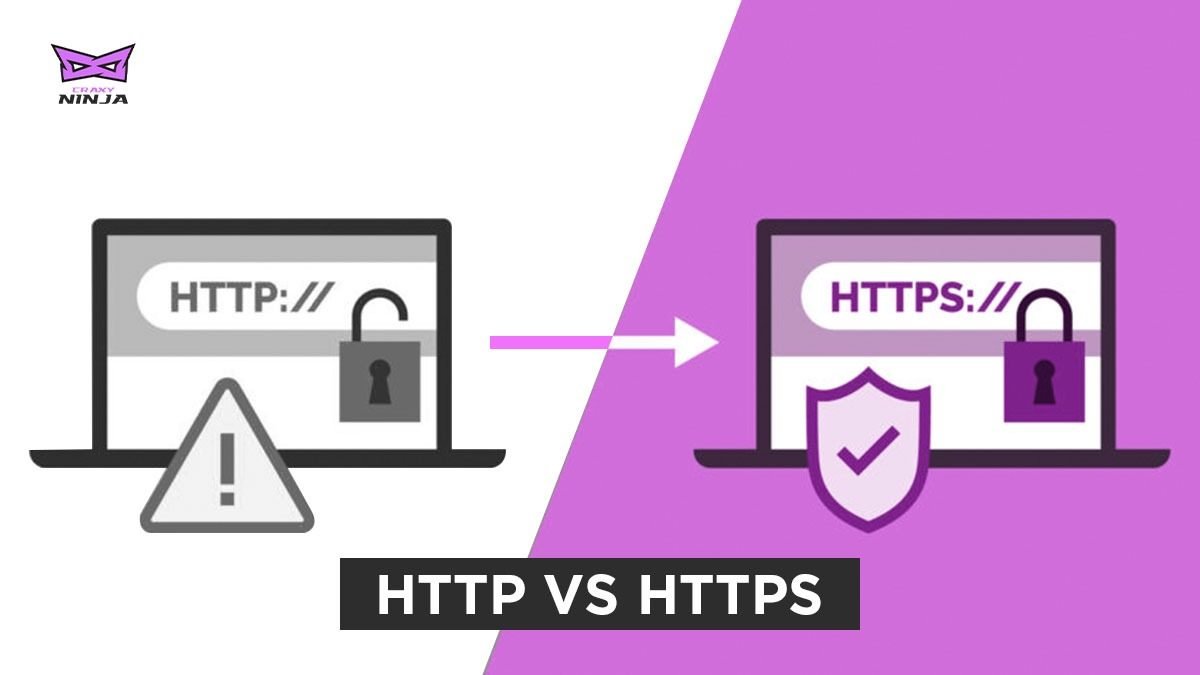Let’s start by understanding the difference between HTTP and HTTPS regarding security, performance, and SEO benefits. Don’t worry—We will break it down for you in a way that’s easy to grasp, even if you’re not a tech expert.
I. Understanding HTTP:
HTTP, which stands for Hypertext Transfer Protocol, is the foundation of communication on the World Wide Web. It defines the rules and structure for transmitting data between a web server and a client’s web browser. However, HTTP operates over an unencrypted channel, meaning the data exchanged between the server and the client is not secure.

- Unencrypted Communication:
- HTTP transmits data in plain text format, making it vulnerable to interception and eavesdropping by attackers.
- Any sensitive information, such as passwords or credit card details, sent over an HTTP connection can be easily intercepted and exploited.
- Lack of Data Integrity:
- HTTP lacks mechanisms to ensure data integrity, which means that the transmitted data can be modified or tampered with by malicious actors without detection.
- Attackers can manipulate the content of web pages, inject malicious scripts, or modify data sent through HTTP requests.
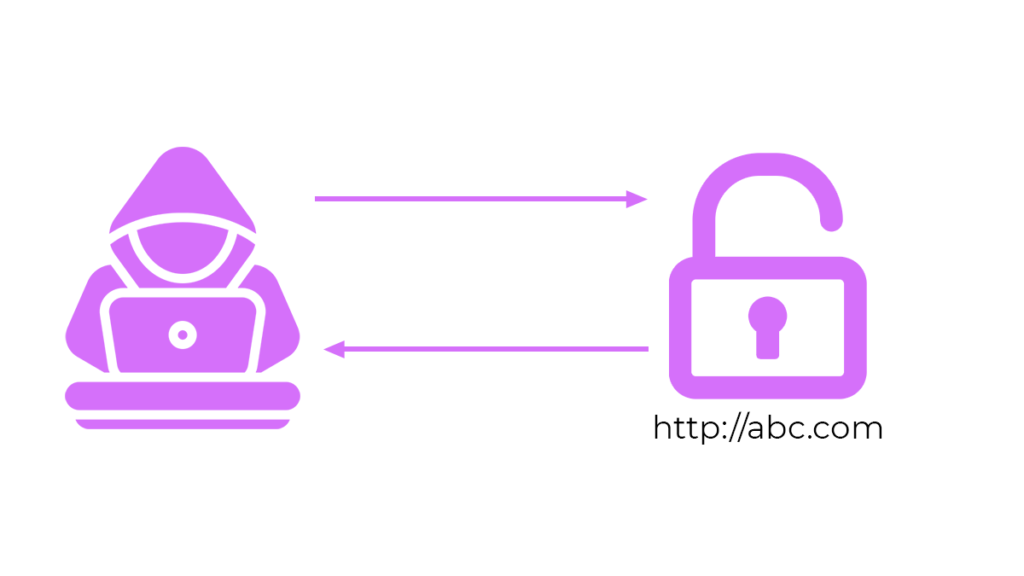
- Default Protocol for Most Websites:
- Until recent years, HTTP was the default protocol used by most websites, as there was less emphasis on security and the need for encryption.
- With the increasing prevalence of cyber threats and the demand for secure communication, the industry has shifted towards HTTPS.
II. Introducing HTTPS:
HTTPS, or Hypertext Transfer Protocol Secure, is an extension of HTTP that adds encryption, authentication, and data integrity mechanisms. It leverages SSL (Secure Sockets Layer) or its successor TLS (Transport Layer Security) protocols to establish a secure connection between the web server and the client’s browser.
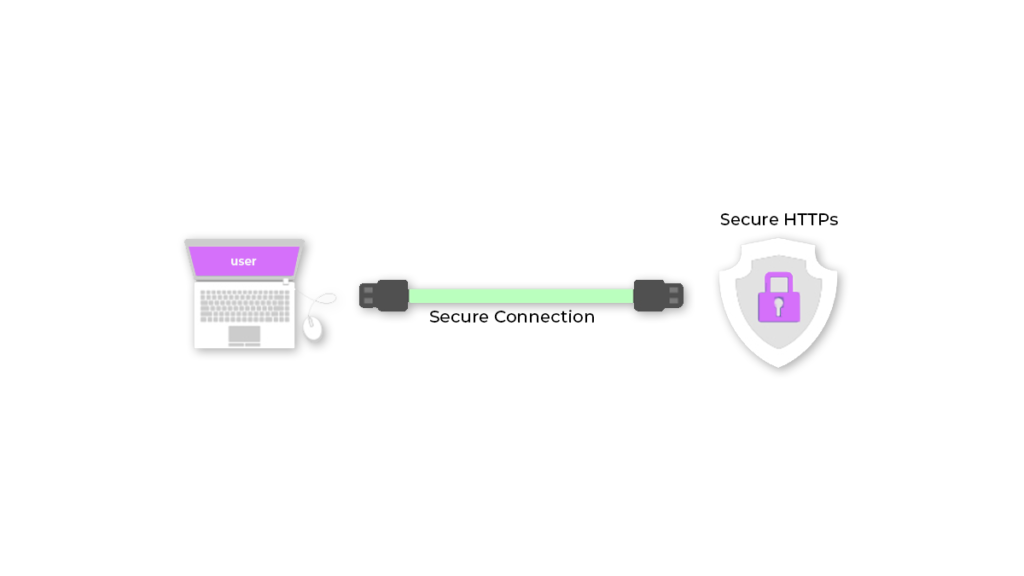
- Encryption:
- HTTPS employs encryption algorithms to encrypt the data between the server and the client, ensuring it is transmitted securely.
- This encryption prevents unauthorized access and protects the confidentiality of sensitive information.
- Data Integrity:
- HTTPS uses cryptographic mechanisms to ensure the integrity of transmitted data.
- HTTPS detects unauthorized modifications or tampering with the data during transmission through digital signatures, hashes, and checksums.
- Authentication:
- HTTPS employs digital certificates issued by trusted Certificate Authorities (CAs) to authenticate the identity of websites.
- These certificates verify that the website accessed is the legitimate entity it claims to be, mitigating the risk of phishing attacks and impersonation.
- Implementation of HTTPS Requires an SSL/TLS Certificate:
- To implement HTTPS, website need to obtain an SSL/TLS certificate, which contains a public key and information about the website’s identity.
- A trusted CA signs this certificate, establishing the authenticity and trustworthiness of the website.
III. Key Differences between HTTP and HTTPS
- Encryption:
- HTTP does not encrypt data.
- HTTPS uses encryption algorithms to protect the confidentiality of transmitted information.
- Data Integrity:
- HTTP lacks mechanisms to ensure data integrity, making it susceptible to tampering.
- HTTPS verifies the integrity of data, detecting any unauthorized modifications.
- Authentication:
- HTTP does not provide any authentication of the website’s identity.
- HTTPS uses SSL/TLS certificates to verify the authenticity of websites.
- Trust and User Confidence:
- HTTPS enhances user trust and confidence by displaying a padlock icon and the “Secure” label in browsers, indicating a secure connection.
- Browsers may label HTTP connections as “Not Secure,” potentially discouraging users from interacting with the website.
- SEO and Ranking Benefits:
- Search engines like Google consider HTTPS a ranking factor, giving websites with HTTPS a slight advantage in search results over HTTP-only websites.
- This SEO benefit incentivizes website developers and owners to adopt HTTPS.
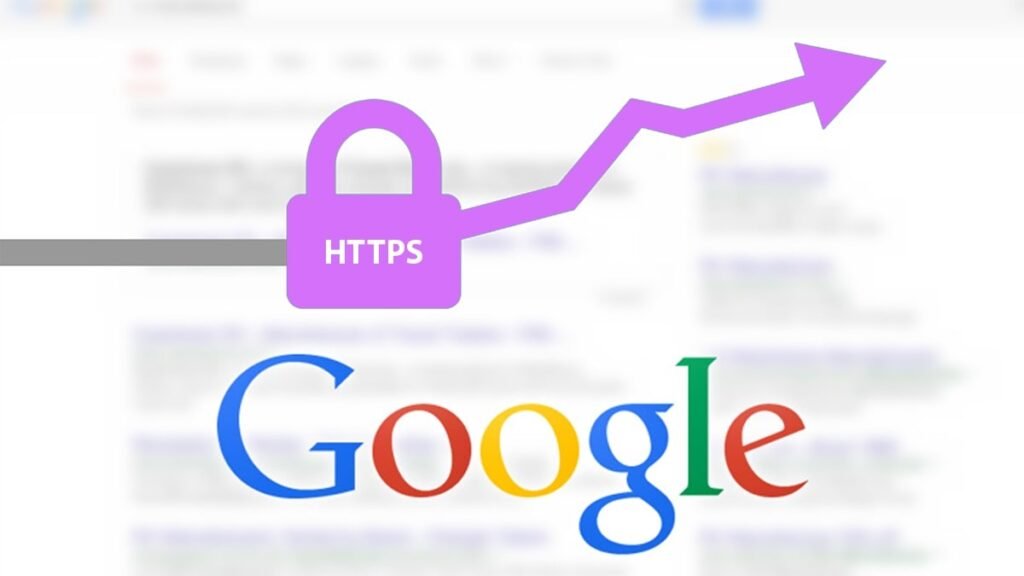
IV. Benefits of HTTPS Adoption:
- Enhanced Security:
- HTTPS protects sensitive data from interception and eavesdropping, safeguarding user privacy and preventing unauthorized access.
- Data Integrity:
- HTTPS ensures that data remains unaltered during transmission, reducing the risk of data manipulation and unauthorized modifications.
- User Privacy:
- By encrypting communication, HTTPS protects users’ personal information, such as login credentials, credit card details, and browsing history.
- Authentication and Trust:
- HTTPS establishes trust between the website and the user by verifying the website’s identity, reducing the risk of phishing and impersonation.
- Regulatory Compliance:
- HTTPS aligns with various data protection regulations, such as the EU’s General Data Protection Regulation (GDPR), which mandates the secure transmission of personal data.
- SEO and User Experience:
- HTTPS is favored by search engines, improving website visibility and providing a positive user experience with security assurance.
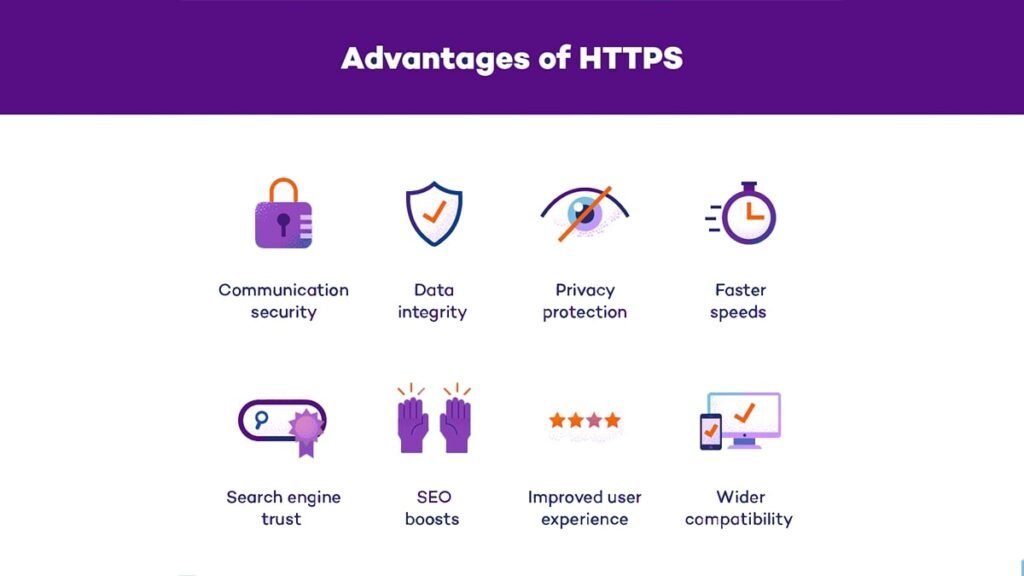
V. Migrating from HTTP to HTTPS
- Obtaining an SSL/TLS Certificate:
- Website owners must acquire an SSL/TLS certificate from a trusted CA.
- Certificates can be obtained for free or purchased, depending on the requirements.
- Implementing SSL/TLS Certificates on Web Servers:
- Web servers must be configured to use SSL/TLS certificates.
- This process varies depending on the server software (e.g., Apache, Nginx, IIS).
- Updating Internal Links and Resources to HTTPS:
- All internal links, including images, scripts, and stylesheets, should be updated to use the HTTPS protocol to avoid mixed content warnings.

- Redirecting HTTP to HTTPS:
- Implementing HTTP to HTTPS redirects ensures that users are automatically redirected to the secure version of the website.
- This can be done using server-side redirects or HSTS (HTTP Strict Transport Security) headers.
- Testing and Monitoring:
- After migration, thorough testing and monitoring are crucial to verify that HTTPS is implemented correctly and to address any issues that may arise.
VI. Common HTTPS Implementation Challenges
- Mixed Content Warnings and Troubleshooting:
- Mixing HTTP and HTTPS resources on a page may trigger mixed content warnings in browsers.
- Troubleshooting involves identifying and fixing these mixed content issues.
- Compatibility Issues with Older Browsers or Devices:
- Some older browsers or devices may not support modern SSL/TLS protocols or have outdated root certificates, causing compatibility issues with HTTPS.
- Performance Considerations:
- The encryption and decryption process can introduce additional latency and overhead, potentially impacting website performance.
- Optimizations like HTTP/2 and content caching can help mitigate these effects.
- Impact on Third-Party Services and Integrations:
- Migrating to HTTPS may require updating third-party services, such as APIs or embedded content, to ensure compatibility and avoid security warnings.
- Certificate Management and Renewal Best Practices:
- Proper management of SSL/TLS certificates, including timely renewal and adherence to security best practices, is essential to maintain a secure HTTPS implementation.
VII. HTTPS Everywhere: The Future of Web Security
- Industry-Wide Push for HTTPS Adoption:
- Major organizations, including browser vendors and industry standards bodies, are actively promoting the adoption of HTTPS for all websites to enhance web security.
- Browsers Marking HTTP Sites as “Not Secure”:
- Popular web browsers, such as Chrome, Firefox, and Safari, now display warnings or labels on HTTP websites to alert users of potential security risks, further motivating the migration to HTTPS.
- Emerging Technologies: HTTP/3, QUIC, and Beyond:
- HTTP/3, based on the QUIC protocol, aims to improve performance and security by minimizing latency and providing enhanced encryption.
- Keeping up with emerging technologies is crucial for staying ahead in web security.
As the web moves towards a more secure future, HTTPS is no longer a choice but a necessity for any website aiming to protect its users and maintain a trustworthy online presence.
Want to learn more about SEO? Read How to improve Pagespeed Insights Score

